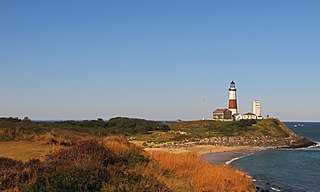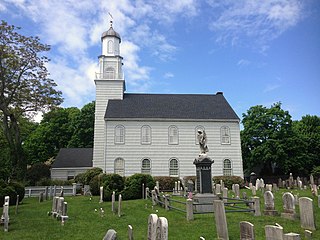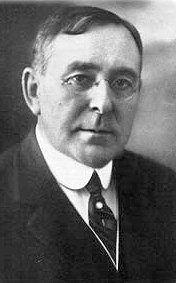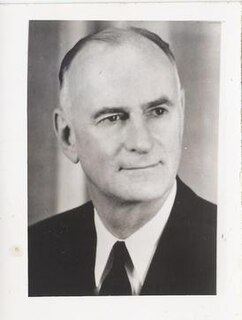- Rev. George Alexander - University Place Presbyterian Church, New York, NY
- Rev. Maitland Alexander - First Presbyterian Church, Pittsburgh, PA
- Rev. Elmer Allen Bess - Presbyterian Church, Clinton, IA
- Rev. Henry Alford Boggs - Princeton Presbyterian Church, Philadelphia, PA
- Rev. Harry L. Bowlby - First Presbyterian Church, Altoona, PA
- Rev. Marcus A. Brownson – Tenth Presbyterian Church, Philadelphia, PA
- Rev. Thomas W. Campbell – Richmond Hill, NY
- Rev. Frank M. Carson – First Presbyterian Church, Greenwich, CT
- Rev. J. F. Carson – Central Presbyterian Church, Brooklyn, NY
- Rev. Robert H. Carson – Grace Presbyterian Church, Brooklyn, NY
- Rev. John Lyon Caughey – Harlem Presbyterian Church, New York, NY
- Rev. J. Wilbur Chapman – Jamaica Estates, NY
- Rev. Joseph W. Cochran – Secretary, Board of Education, Philadelphia, PA
- Rev. Nathaniel W. Conkling – New York, NY
- Rev. Campbell Coyle – Bellefield Presbyterian Church, Pittsburgh, PA
- Rev. Henry C. Cronin – Second Presbyterian Church, Jersey City, NJ
- Rev. John R. Davies – Bethlehem Presbyterian Church, Philadelphia, PA
- Rev. Reid S. Dickson – Presbyterian Church, New Providence, NJ
- Rev. William Ray Dobyns – First Presbyterian Church, St. Joseph, MO
- Rev. C. T. Edwards – Bay Ridge Presbyterian Church, Brooklyn, NY
- Rev. William T. Elsing – New York, NY
- Rev. Charles R. Erdman – Professor, Princeton Theological Seminary, Princeton, NJ
- Rev. William Hiram Foulkes – Rutgers Presbyterian Church, New York, NY
- Rev. James E. Garvin – Herron Avenue Presbyterian Church, Pittsburgh, PA
- Rev. John M. Gaston – Secretary, Freedmen’s Board, Pittsburgh, PA
- Rev. Willis L. Gelston – Supt., Young People’s Work, Board Publication, and S. S. Work, Philadelphia, PA
- Rev. C. P. Goodson – Jamaica Estates, NY
- Rev. Harris H. Gregg – Washington and Compton Ave. Presbyterian Church, St. Joseph, MO
- Rev. A. W. Halsey – Secretary, Board of Foreign Missions, New York, NY
- Rev. Alexander Henry – Secretary, Board Publication and School Work, Philadelphia, PA
- Rev. Frederick W. Hirriett - President, Centre College, Danville, KY
- Rev. William A. Holliday - Plainville, NJ
- Rev. Robert Hunter – Union-Tabernacle Presbyterian Church, Philadelphia, PA
- Rev. W. H. Hubbard – Executive Secretary, Executive Commission, Auburn, NY
- Rev. Robert Scott Inglis – Third Presbyterian Church, Philadelphia, PA
- Rev. C. A. R. Janvier – Hollond Memorial Church, Philadelphia, PA
- Rev. Howard Agnew Johnston – First Presbyterian Church, Stamford, CT
- Rev. Richard T. Jones – Susquehanna Ave. Presbyterian Church, Philadelphia, PA
- Rev. Henry E. Jones – J. A. Henry Memorial Presbyterian Church, Philadelphia, PA
- Rev. George Gibson Kerr – First Presbyterian Church, Cannonsburg, PA
- Rev. John H. Kerr – Arlington Avenue Presbyterian Church, Brooklyn, NY
- Rev. Martin D. Kneeland – Moderator, Synod of New York, Boston, MA
- Rev. Washington R. Laird – First Presbyterian Church, West Chester, PA
- Rev. James W. Laughlin – First Presbyterian Church, Janesville, WI
- Rev. E. Trumbull Lee – First Presbyterian Church, Wilkinsburg, PA
- Rev. J. Beveridge Lee – St. Paul’s Presbyterian Church, Philadelphia, PA
- Rev. H. D. Lindsay – President, Pennsylvania College for Women, Pittsburgh PA
- Rev. John E. Lloyd – Flatbush Dutch Reformed Church, Brooklyn, NY
- Rev. Frederic W. Loetscher – Professor, Princeton Theological Seminary, Princeton, NJ
| - Rev. Davis W. Lusk – Supt., Presbytery’s Church Extension Committee, Newark, NJ
- Rev. J. K. McClurkin – Shady Side United Presbyterian Church, Pittsburgh, PA
- Rev. Robert H. McCready – Ridgewood, NJ
- Rev. Thomas A. McCurdy – First Presbyterian Church, Mandan, ND
- Rev. William L. McEwan – Third Presbyterian Church, Pittsburgh, PA
- Rev. D. J. McMillan – Secretary, Board of Church Erection, New York, NY
- Rev. Robert Mackenzie – Secretary, College Board, New York, NY
- Rev. Harlan G. Mendenhall – West 23rd St. Presbyterian Church, New York, NY
- Rev. John A. Marquis – President, Coe College, Cedar Rapids, IA
- Rev. Mark A. Matthews – Moderator General Assembly Presbyterian Church, Seattle, WA
- Rev. Louis Meyer – Editor The Fundamentals, Cincinnati, OH
- Rev. J. R. J. Milligan – First Presbyterian Church, Pontiac, MI
- Rev. Henry C. Minton – First Presbyterian Church, Trenton, NJ
- Rev. James D. Moffat – President, Washington and Jefferson College, Washington, PA
- Rev. Thomas Needham – Collingswood, NJ
- Rev. Ford C. Ottman – Stamford, CT
- Rev. S. S. Palmer – Broad St. Presbyterian Church, Columbus, OH
- Rev. John F. Patterson – Central Presbyterian Church, Orange, NJ
- Rev. Francis L. Patton – President, Princeton Theological Seminary, Princeton, NJ
- Rev. Wilson Phraner – East Orange, NJ
- Rev. Wallace Radcliffe – New York Avenue Presbyterian Church, Washington, D.C.
- Rev. Charles Lee Reynolds – Second Presbyterian Church, Lexington, KY
- Rev. William Henry Roberts – Stated Clerk, General Assembly, Philadelphia, PA
- Rev. John Robertson – Minneapolis, MN
- Rev. Frederick F. Shannon – Brooklyn, NY
- Rev. John Balcom Shaw – Second Presbyterian Church, Chicago, IL
- Rev. Arthur J. Smith – New York, NY
- Rev. Frank W. Snead – East Liberty Presbyterian Church, Pittsburgh, PA
- Rev. James H. Snowden – Professor, Western Theological Seminary, Pittsburgh, PA
- Rev. Cornelius M. Steffens – President, German Presbyterian Theological Seminary, Dubuque, IA
- Rev. J. Ross Stevenson – Brown Memorial Presbyterian Church, Baltimore, MD
- Rev. William P. Stevenson – First Presbyterian Church, Yonkers, NY
- Rev. D. C. Stewart – First Reformed Church, Hackensack, NJ
- Rev. William P. Swartz – New York, NY
- Rev. Ethelbert D. Warfield – President, Lafayette College, Easton, PA
- Rev. Robert Watson – Covenant Presbyterian Church, Cincinnati, OH
- Rev. Thomas Walters – Tabernacle Presbyterian Church, Pittsburgh, PA
- Rev. Acquilla Webb, Warren Memorial Presbyterian Church, Louisville, KY
- Rev. Newell Woolsey Wells – South Third Street Presbyterian Church, Brooklyn, NY
- Rev. E. Van Dyke Wight – Westminster Presbyterian Church, Middletown, NY
- Rev. John T. Wilds – Seventh Presbyterian Church, New York, NY
- Rev. Robert Dick Wilson - Professor, Princeton Theological Seminary, Princeton, NJ
- Rev. James A. Worden – Supt., S. S. Training Board of Publication and Sunday School Work, Philadelphia, PA
- Rev. Edgar Whitaker Work – Fourth Presbyterian Church, New York, NY
- Rev. David G. Wylie – Scotch Presbyterian Church, New York, NY
- Rev. S. Edward Young – Bedford Presbyterian Church, Brooklyn, NY
|



















